ALLEGHENY MOUND ANTS
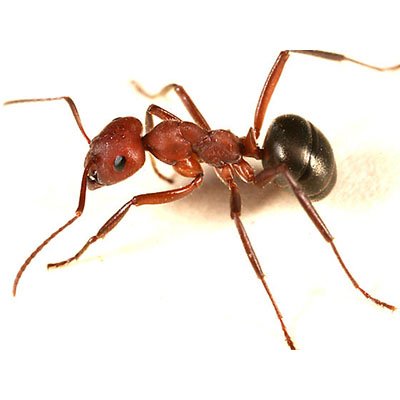
DESCRIPTION
The Allegheny Mound Ant (Formica exsectoides) is a type of ant native to the Atlantic area of North America. Often very striking in appearance, these ants have a red-orange head and thorax with black-brown gasters. They have 1 node. Mound ants are generally between 1/8” – 1/4” long.
Habits
The ant’s colonies are complex. Several different mounds may be interconnected. The tunnels may extend 3 feet (0.91 m) into the ground and 4 feet (1.2 m) upwards in the mound. The mound serves as a solar incubator for the eggs and larvae. Unlike most other ants, Allegheny Mound ants have multiple queens. The ants have a lifespan of 2.5-3 months. They feed on dead insects and aphid honeydew.
Ants hibernate in the tunnelways of a mound below the soil surface. Foraging for food begins when the colony becomes active in the spring. This is usually in late March or early April. Workers attack and dismember beetles, sowbugs, spiders, small caterpillar larvae, and many other arthropods that the ants can overcome. The other type of food they seek is honeydew produced by sap-sucking insects like aphids, scales, and treehoppers.
Control Methods
To control the Allegheny Mound ant, you need to treat the anthill.
– Use a rake to disrupt the hill.
– Sprinkle a properly labeled insect dust on the entire anthill.
– Lightly water the dust so it stays in place.
– After 7 days, repeat if necessary.



CARPENTER ANTS
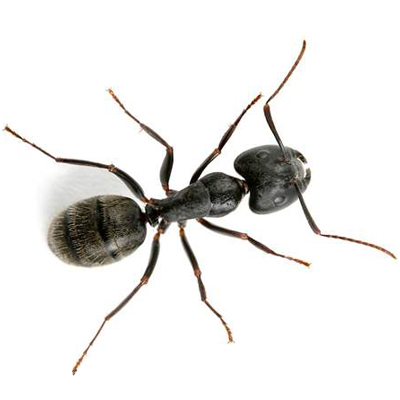
DESCRIPTION
Workers are large (1/8-1/2”) but vary greatly in size, Queens about (1/2-5/8”) Colors vary from black, red and brownish or black and red. Carpenter ants are 1 noded ants with an evenly rounded thorax. Development time (egg to adult) takes at least 60 days. There is only one wingless queen per colony. Colonies contain up to 3,000 workers when maturity is reached in about 3 to 6 years. Swarmers (winged) are not produced until the colony is at least 2 years old.
Habits
Most Carpenter Ants establish their first nests in decaying wood and later expand into solid wood. Inside, nests are located in wood (preferably softened by fungus rot), in insulation, and/ or in wall voids. Outside, nests are typically located in rotting fence posts, stumps, firewood, dead portions of standing trees and under stones or fallen logs. The workers forage up to 300 ft from the nest. Carpenter Ants enter buildings around door and window frames, eaves, plumbing and utility lines and tree branches that come in contact with the building. Some workers are active during the day, but most activity is from dusk until dawn.
Control Methods
The first step is to determine if the ants are merely foraging inside for food or if there is a nest inside. The best indication of an INDOOR NEST is sawdust (FRASS), wood piles containing insect body parts and/or a rustling sound in the walls. Gently tap all exposed wood such as floor joists, sill plates, roof rafters, etc. with a screwdriver and listen for sound changes; nest cavities give a hollow dull ring. Check suspicious areas with a knife blade, a blade will penetrate infested wood very easily. Be sure to inspect crawl spaces, basements and attics. Carpenter Ants have trails they follow throughout a structure and often use electrical wires and pipes.
Once the nest has been located, residual sprays and dust can be used to treat the nest. Dust around all water pipes, under sinks, toilets, dishwashers, etc. Treat around base boards, window frames and door frames with labelled residual insecticide. Outside, be sure tree branches are not touching the building. Wood piles should be off the ground and stored away from the building. Exterior sprays with a residual insecticide should be performed treating around window frames, door frames, cracks in the foundation and where the soil and foundation meet. OUTSIDE, check around buildings for foraging trails, especially in the direction of trees and shrubs, wood piles etc. Spray around foundations and other areas of concern outdoors. Cut trees and shrubs back that come in contact with the building. Caulk around window and door frames and any gaps around electrical and water lines will help to prevent the ant from coming indoors.
Inspect old railway tiles around the building, as often they are the source of infestation. Treat the tiles with insecticide dust or residual sprays.



PHARAOH ANTS
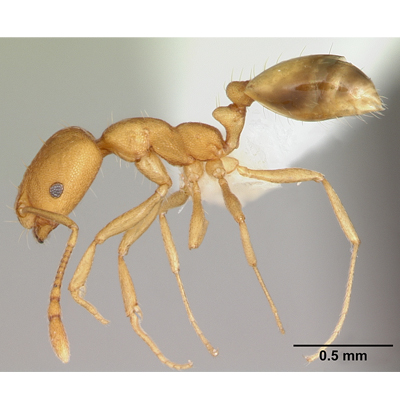
DESCRIPTION
The Pharaoh Ant is a tiny ant about 1/10-1/16” long. Worker ants are reddish-yellow, the queen is usually darker red and males are black.
Key Characteristics
Small size with 3 segmented club on antennae, well-developed eyes, a bi-nodal petiole (narrow waist between thorax and abdomen) and no stinger present.
Food
Omnivorous, feeding generally on animal or vegetable food, dead insects, small animals, open wounds, shed human skin on bedding, sucrose and IV solutions, sweets and fats.
Habits
Typically nests indoors are inside electrical conduits, in linen closets, in sterile surgical packets, under flowerpots, within walls of buildings, near water sources and in numerous other places. Pharaoh ants prefer areas with a temperature around 80F and a relative humidity of about 80%. Foraging workers may travel over 100 feet for food.
Control Methods
Pharaoh ant control has typically been based on the spraying of insecticides around areas where ants have been seen and/or dusting in wall voids and behind electrical switch plates with insecticide dusts. Although such methods may kill off the 5-10% of the ants that leave the nest looking for food and water, they do not usually result in colony elimination. Furthermore, pharaoh ant colonies will often become alarmed when treatment occurs and will split their colony into smaller units. This activity worsens the situation. Effective Pharaoh ant control utilizes an integrated pest management approach, with focus on ant baits containing insecticides. With baiting, proper placement of the bait will result in effective ant control, however attention must be paid to detail to ensure ant elimination – checking for ant activity and placing baits in correct situations. Along with correct bait placement it is essential that highest level of sanitation be maintained, ants must not be distracted from the bait by other food sources – such as crumbs, spillages, dirty dishes, etc.


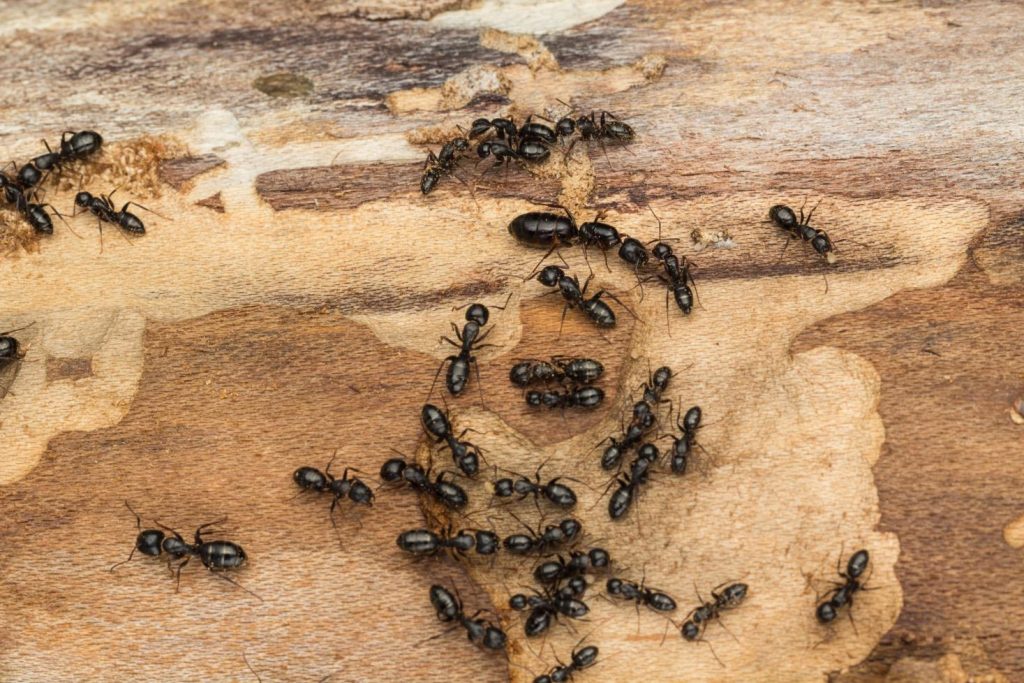
Are You Attracting Carpenter Ants Without Realizing It? 5 Surprising Things They Love
Some types of pests are merely an inconvenience, but others can cause serious damage to your property–carpenter ants are among the worst. What do carpenter ants do? Carpenter ants can be dangerous because these little intruders tunnel through wood and into other materials to create nests, significantly weakening parts of structures such as attics, walls,…

Behind the Boards: Understanding Carpenter Ant Behavior and Infestation Patterns
When it comes to pest infestations, carpenter ants are one of the biggest concerns for business owners in Canada. Known for their ability to carve into wood, these little insects can pose serious risks to the structure of commercial settings such as warehouses, offices, and industrial facilities. But what are the signs your property has…
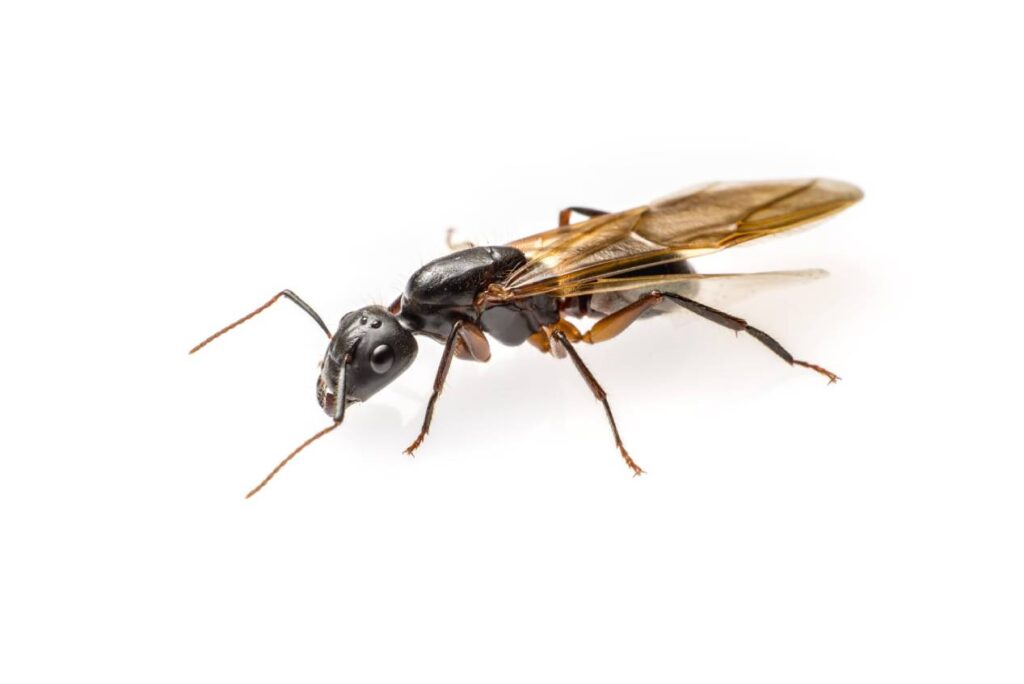
Ants can fly, and that’s not all!
Although flying ants may be more anxiety-inducing than their wingless counterparts, they don’t represent any greater threat. Here’s what you need to know about these small critters. Why do some ants have wings? The ants you see scurrying around on the ground are wingless females. They do all the work within the colony, but are…
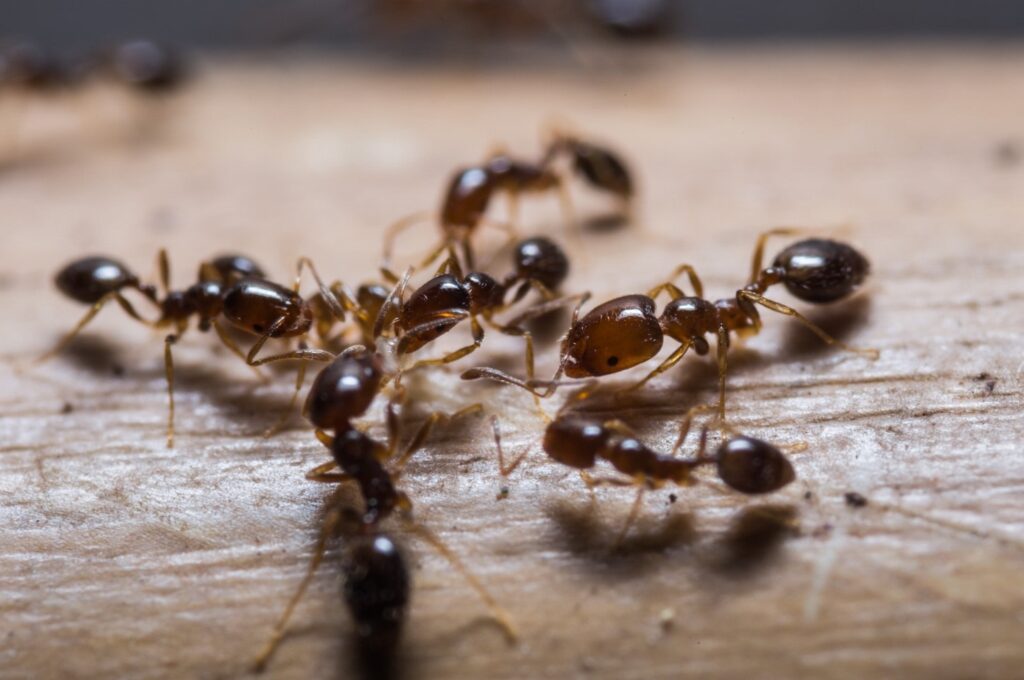
How ants can damage your home and how to get rid of them
Ants never give you the warm fuzzies, but of the various species, the common carpenter ants are the most destructive to your home. They dig through the wood in the structure of your house to make safe spaces to hide. Once inside, they keep burrowing and can destroy insulation and any wood in your home,…
